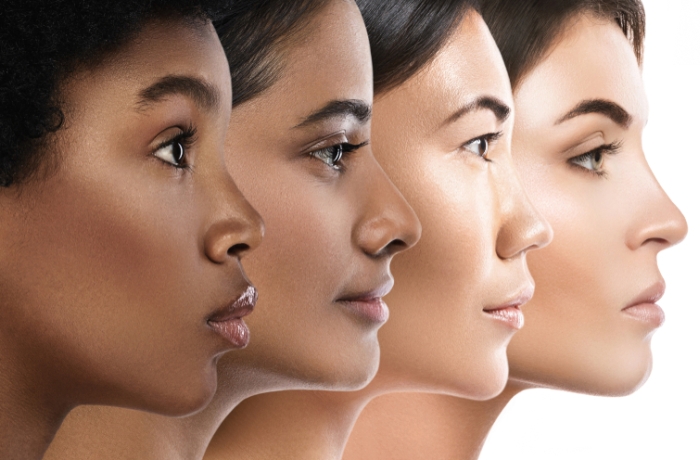Ethnic rhinoplasty is a specialized procedure that requires a skilled and experienced surgeon to achieve the desired results. Turkey is home to some of the world's best plastic surgeons, who use the latest techniques and technology to ensure a successful outcome and as HealTrip Global we bring the best ones to you!
Ethnic rhinoplasty surgical procedure aims to reshape the nose while preserving natural ethnic characteristics. It is a specialized form of rhinoplasty that considers unique features of different ethnic groups, such as nose size, shape, and contour.
Recently, ethnic rhinoplasty has gained popularity globally, including in Turkey, as it allows individuals to enhance their appearance while maintaining cultural identity. Ethnic rhinoplasty celebrates diversity and emphasizes natural beauty instead of conforming to Western beauty standards. It is an excellent option for those who wish to improve facial harmony and boost self-confidence while retaining their cultural heritage.
This article discusses various aspects of ethnic rhinoplasty, including alternatives, benefits, requirements for treatment candidates, and how it is performed step-by-step. Additionally, it covers how to prepare for the surgery, risks, complications, recovery period, activities to avoid, and final thoughts and recommendations.


To perform ethnic rhinoplasty in Turkey, the process includes:
Different techniques can be used in ethnic rhinoplasty, such as the closed or open approach, which can affect the outcome. The closed approach involves making incisions inside the nostrils, leaving no visible scarring, but limiting the surgeon's visibility and access to the nasal structure. The open approach involves making an incision across the columella, the tissue between the nostrils, which provides better visibility and access but may leave a visible scar. The surgeon recommends the best approach based on factors such as the extent of the surgery, the desired outcome, and the nasal structure.
It's crucial to note that every individual's surgery is unique, and the specific approach and techniques used depend on their needs and goals. The surgeon provides personalized recommendations and guidance throughout the process.
Wide nose ethnic rhinoplasty, also known as ethnic rhinoplasty or ethnic nose reshaping, is a surgical procedure designed to enhance the appearance of the nose while respecting and preserving the individual's unique ethnic features. This specialized form of rhinoplasty is tailored to individuals from diverse ethnic backgrounds, including African, Asian, Middle Eastern, and Hispanic descent, who seek to achieve a more balanced and harmonious facial profile.
The goal of wide-nose ethnic rhinoplasty is not to erase one's ethnicity but rather to refine and improve the aesthetics of the nose while maintaining its cultural and ethnic identity. Surgeons who specialize in this procedure understand the importance of preserving cultural heritage and unique facial characteristics, ensuring that the results look natural and harmonious with the rest of the face.
Ethnic rhinoplasty, also known as ethnic nose surgery, is a specialized form of rhinoplasty tailored to address the unique features of individuals from diverse ethnic backgrounds. This procedure aims to enhance or refine the nose while preserving and respecting the patient's cultural and ethnic characteristics.
The cost of ethnic rhinoplasty can vary significantly depending on several factors:
Geographic Location: Prices can vary based on the cost of living and demand for cosmetic procedures in a specific area. Urban centers and regions with higher living costs may have higher prices.
Surgeon's Experience and Reputation: Experienced and highly reputed surgeons may charge more for their expertise and skills.
Extent of the Procedure: The complexity of the surgery plays a significant role in cost. More extensive procedures, such as reshaping both the bone and cartilage, tend to be more expensive.
Facility Fees: This includes costs associated with the surgical facility, such as operating room fees, anesthesia, and post-operative care.
Anesthesia Fees: The type of anesthesia used and the anesthesiologist's expertise will affect the overall cost.
Pre-operative and Post-operative Care: This includes consultations, follow-up appointments, and any necessary medications or dressings.
Additional Procedures: If the patient chooses to combine ethnic rhinoplasty with other cosmetic procedures, such as chin augmentation or lip augmentation, this will impact the overall cost.
Insurance Coverage: In most cases, ethnic rhinoplasty is considered an elective cosmetic procedure and is not covered by insurance.
| Complication | Likelihood |
| Bleeding | Excessive bleeding is rare, occurring in less than 1% of cases. |
| Infection | Infection is also rare, occurring in less than 1% of cases. |
| Scarring and poor wound healing | While scarring is inevitable, poor wound healing occurs in less than 5% of cases. |
| Breathing difficulties | Breathing difficulties occur in less than 2% of cases. |
| Changes in sensation | Changes in sensation are common but usually temporary, lasting for a few weeks to several months. |
| Anesthesia risks | The risk of serious complications from anesthesia is less than 1 in 10,000 cases. |